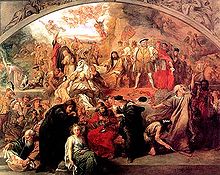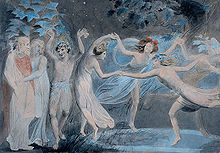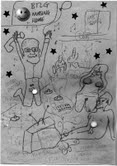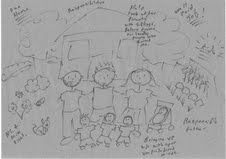Namaste,
Serena Anderlini-D’Onofrio, PhD
Professor of Humanities
University of Puerto Rico, Mayaguez
Namaste,
Serena Anderlini-D’Onofrio, PhD
University of Puerto Rico, Mayaguez
 |
| Fritz Klein |
Namaste,
Serena Anderlini-D’Onofrio, PhD
University of Puerto Rico, Mayaguez
 |
| Yemisi Ilesanmi |
Yemisi Ilesanmi is a trade union/human rights activist. She has a Masters of Law (LLM) on Gender, Sexuality and Human Rights from Keele University, Stadffordshire, UK and a Law degree(LLB) from Obafemi Awolowo University ile -Ife, Nigeria. She works with the Nigeria Labour Congress . She has served on many national and International labour/ human rights committees including as Vice president of the International Trade Union Confederation (ITUC) 2006-2009 and President of the ITUC Youth committee (2004-2009)
 |
|
| Yemisi Ilesanmi |
Yemisi Ilesanmi is a trade union/human rights activist. She has a Masters of Law (LLM) on Gender, Sexuality and Human Rights from Keele University, Stadffordshire, UK and a Law degree(LLB) from Obafemi Awolowo University ile -Ife, Nigeria. She works with the Nigeria Labour Congress . She has served on many national and International labour/ human rights committees including as Vice president of the International Trade Union Confederation (ITUC) 2006-2009 and President of the ITUC Youth committee (2004-2009)
 |
| Yemisi Ilesanmi |
Yemisi Ilesanmi is a passionate human rights activist, bisexual, atheist and an unpublished poet and budding writer. She is interested in and often make public presentations on gender issues, sexuality rights, workers rights, youth representation and environmental protection. She is commited to a world of peace where justice reigns supreme.
Text originally published as a Note on Facebook, republished here with permission.
Last August at UEL a sense of hope and joy of coming together emanated from the mere simultaneous presence of so many bis with different interests, backgrounds and motivations for participating. When BiCon 28, 10 ICB, and BiReCon converged, BiTopia came alive. The sober walls of academe were made more spirited and effervescent by the concrete presence of such an imaginative congregation of folks from many countries, genders, queer subcultures, age groups, venues, and walks in life.
In subsequent days, one would get a sense of the lore of bisexuality, how bi people like to dress, how they relate, what they talk about, the urban legends they trade. Imaginativeness, creativity, playfulness, a certain taste for the odd, the eccentric, an inclination for the carnivalesque, the topsy-turvy, for the giggly excess, the performative, the subversive. Different age groups met, who have experienced biphobia at different times and in different contexts, yet with the same sense that integration of perceived opposites is what dissipates the fears. The festive atmosphere was traversed with a vibration that energized the intention to respond to the challenges that make bisexuality necessary as a transformative force for the new millennium.
Thanks for reading us. We hope you have enjoyed. Please leave a comment. More exciting posts to follow on diverse topics in the near future!
 |
| Plays By Shakespare, Painting by Sir John Gilbert |
 |
| The “Bard” |
 |
| Oberon, Titania, Puck, in Midsummer Night’s Dream |
To be be continued: 8 of 8 – Conclusion. Watch out for this exciting section in a few days!
 |
| Jones’s Study: Bis Imaging Future |
 |
| Jones’s Study” Bis Imagining Future |
 |
| Jones’ s Study: Bis Imagining Future |
To be be continued: 6 of 8 – Cluster 4: Bisexuality at Work. Includes comments about contributions by Heidi Bruins Green, Helena See, and Carola Towle. Watch out for this exciting section in a few days!
Freedom of sexual expression is often considered a fundamental human right. In this context , we observe that when research projects are designed with the intent to respect this right, results for bisexuality are encouraging. Even so, when we open up wider horizons, when we delve more deeply into human relatedness and its dynamics, we find that biphobia and bi-negativity are far from disappearing. This is the focus of the second cluster. Where does the fear of bisexuality make its appearance? What are the contexts, dynamics, situations that trigger biphobia? What deeper levels of disunity, denial, mistrust, does this fear manifest? How are organizations, communities, families, relationships traversed by it? How do biphobia and bi-negativity get symbolized? What political, cultural, economic forces power its perpetuation and reproduction? What are the costs to humanity in terms of personal and social life? These and many related questions are addressed in the two articles in this section: “Deconstructing Biphobia,” by Miguel Obradors-Campos, and “Shady Characters,” by Christian Klesse.
| People at BiCon |
In “Deconstructing Biphobia,” Miguel Obradors-Campos presents a non-essentialist theory of biphobia as a form of oppression that manifests within and without LGBT communities and is a direct result of the overarching binary that organizes knowledge about love in western cultures. Obradors’ perspective is steeped in epistemology, ontology, and other significant aspects of the Western philosophical tradition, from the classics to Kant and beyond. He brings his background in the Romance languages to bear on the complexity of the topic, showing how biphobia is a state of mind. It is an honor to bring such complexity of Latinate lexicon and sentence structure into the multivoiced discourse of this volume. Klesse shifts to the even more personal and unstable terrain of amorous relationships. His reference point is heteronormativity, or the ‘normalization’ of heterosexuality that typifies essentialist discourses. Can bisexuals really organize our amorous lives around a divide that denies us? Both authors provide evidence of how prejudice, fear, ignorance, and confusion about bisexuality affect the lives of openly bisexual people very deeply, and keep bisexual cultures and communities from expanding as naturally and organically as they should in a healthy society.
To be be continued: 5 of 8 – Cluster 3: Bisexuality Through the Lifespan. Includes comments about contributions by Rebecca Jones and Jenny Kangasvuo. Watch out for this exciting section in a few days!
In a similar vein, the last contribution in this section comes from a perspective that honors erotophilia, or the love of love, rather than erotophobia, or the fear of love. Its applied research is auspicated by AIB, the American Institute of Bisexuality. Eric Anderson and his collaborators present significant in-progress findings on men and bisexuality, with a focus on secular cultures in today’s major metropolitan areas of the West. The team includes Matthew Ripley, Adrian Adams, and Robin Pitts. In “The Decreasing Significance of Stigma in the Lives of Bisexual Men” the authors document a cultural shift that empowers young men of our time to be more fluid about their sexuality and more relaxed about connecting physically and emotionally with one another, when compared to men who came of age on or before the AIDS era.
To be be continued: 4 of 8 – Cluster 2: Contexts for Biphobia and Bi-Negativity. Includes comments on contributions by Christian Klesse and Miguel Obradors-Campos. Watch out for this exciting section in a few days!
Copyright and Prepublication Notice: